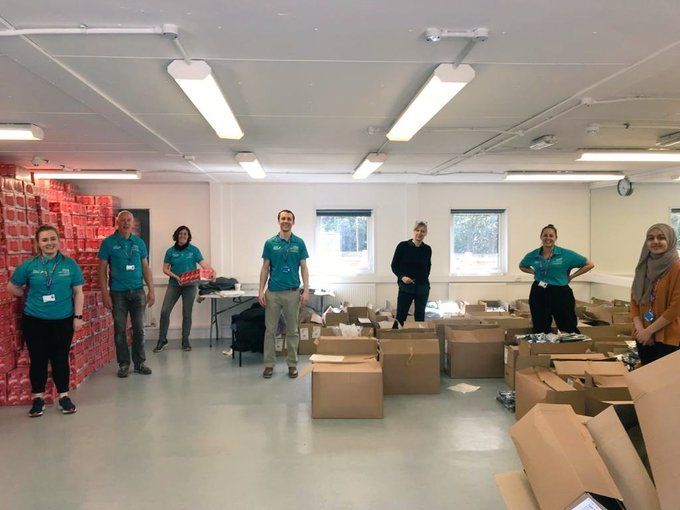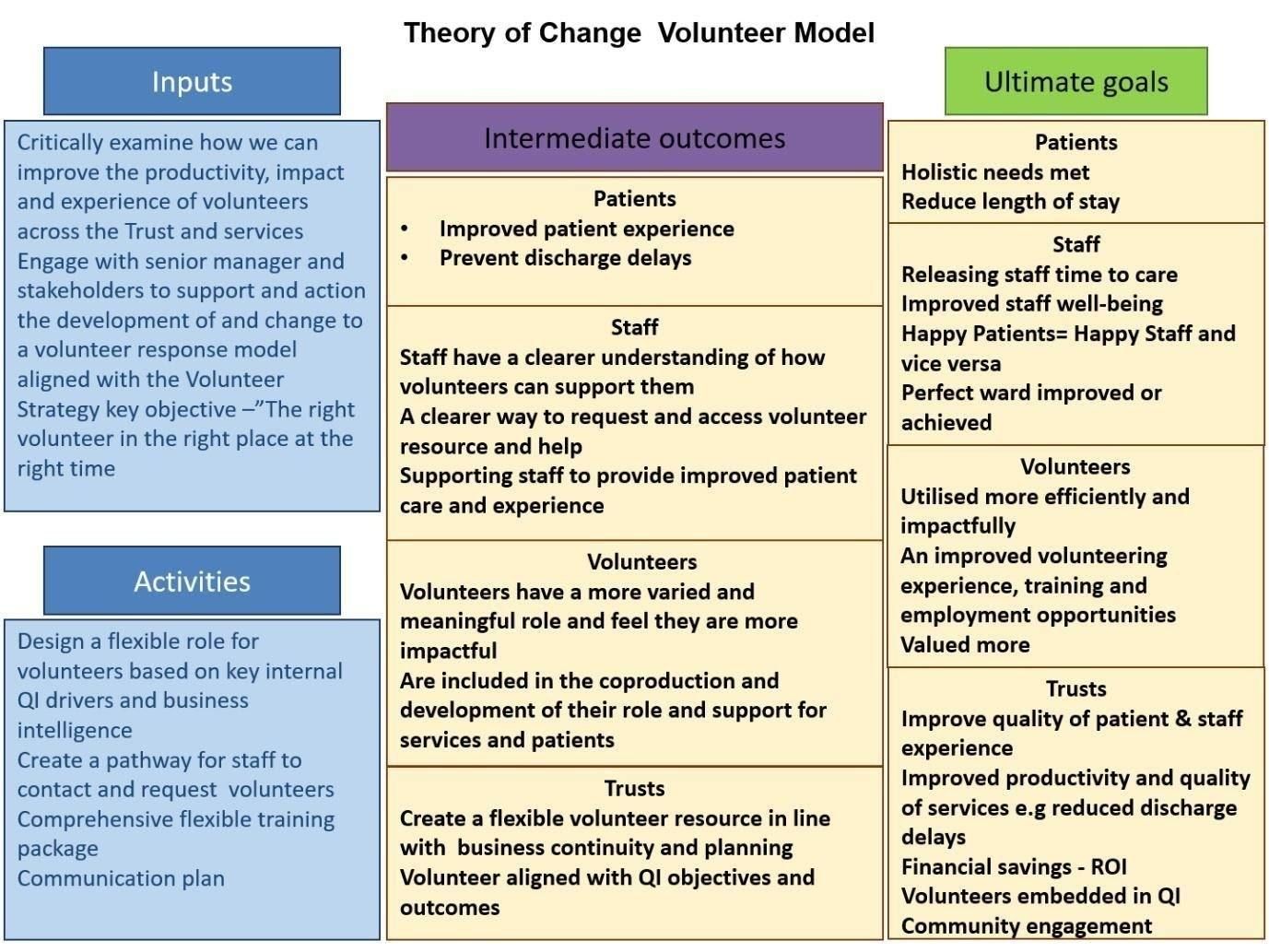Measuring the impact of Active Response Volunteers - Insight and Impact service case study
Tags: Case Study, I&I
17th May 2021
0 Likes

Barts Health NHS Trust
The challenge…
Staff at Barts Health NHS Trust (Barts) believed that to make the most of the pool of volunteers available to their Trust they needed to create a flexible and easy to access volunteer service that could be fully responsive to the fluctuating demands in a busy hospital setting. To meet this need they decided to provide their volunteers with the skills to enable them to undertake a range of different activities, including pharmacy runs and discharge support, and created streamlined processes for requesting help and allocating volunteers to the appropriate tasks.
An Active Response Volunteer role was created which is designed to get the right volunteer to the right place at the right time.
As part of the Volunteering Innovators Programme (VIP) Helpforce was invited to work with Barts to help understand the impact that volunteers in this Active Response role are delivering for patients, staff and the Trust. The Trust was keen to focus on understanding the impact that volunteers make when they undertake To Take Out (TTO) deliveries from the pharmacy. TTO deliveries involve the collection of prescriptions required for patients who are ready to be discharged from hospital.
Our approach…
Helpforce worked closely with key stakeholders from Barts to design and implement a methodology for gathering insights and recording impact that would align with the Trust’s need for continuous improvement in the service and contribute to further development of the VIP volunteering evidence base.
Our Insight & Impact (I&I) approach combined three key elements:
1. Co-design of a Theory of Change setting out links between activities, intermediate outcomes and ultimate goals related to the service

2. Development of an I&I approach plan setting out key information about the service, its objectives, prioritised outcomes for measurement, research questions and the metrics to be used to record impact (including bespoke metrics tailored to the needs of the trust as well as more generic metrics used across all VIP sites)
Key evaluation questions
Do Active Responder volunteer roles lead to improved patient experience and care?
Do Active Responder roles lead to better staff satisfaction?
Are there a greater number of requests for volunteers from clinical staff and wards?
Does the Active Responder role for TTAs lead to reduced delays on discharge for medicines?
Activity capture
Number of volunteers
Number of volunteer hours
Number of patients supported
Number of patient interactions
Frequency of volunteer visits per month
Additional data capture
For a limited time, measuring the average time it takes staff to deliver a TTO
Recording the TTO deliveries undertaken by volunteers
The type and quantity of support requests from staff
Other information required by the Trust including staff perception of how quickly volunteers can speed up the discharge process.
3. Ongoing support with implementation of the I&I plan and assistance to the Trust's project lead with data collection and analysis (including help with the development of bespoke surveys and help with the analysis of data captured using the Trust's Better Impact system).
Helpforce also provided access to some useful tools:
The Helpforce Impact Reporting (HIR) tool to support consistent recording of volunteer related activity and survey data
Helpforce’s standardised surveys for staff, patients and volunteers which helped with consistency of analytical approach across the VIP.
The outcome…
Working with Helpforce to implement a robust I&I approach for the service enabled Barts to develop an evidence base to help strengthen the case for current and future investment in volunteering.
When VIP began there were 58 volunteers performing an Active Response role and they were mainly working in the Emergency Department, however, by the end of the programme there were 188 volunteers working across all of the hospitals at the Trust.
The available data related to volunteer support with the collection of discharge prescriptions from pharmacy, and delivery to patients, suggests that volunteers help to speed up hospital processes and release staff time for other tasks.
Staff feedback suggests that volunteers speeded up the patient discharge process at Barts by approximately 44 mins on average per patient (staff perception of quicker discharge based on n=33 staff)
The service also saved staff trips to the pharmacy (29 minutes of time released per TTO collection. Median time based on 2,179 recorded volunteer TTO trips between 14 Aug 2019 and 30 Apr 2020).
80% of Barts staff working alongside Active Response volunteers (n=45) reported 10 or more minutes of time saved.
The evidence collected as part of the programme also suggests benefits in relation to staff morale:
94% of Barts staff responding to the VIP staff survey (n=31) would recommend their organisation as a place to work. This compares favourably to both the VIP as a whole (89%) and to findings from the NHS staff survey 2019 (70% for Barts staff).
